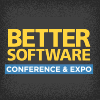Better Software Conference & EXPO 2004

PRESENTATIONS
|
A Defined Process for Requirements Peer Reviews
Most software projects include reviews-whether or not they are officially part of the development process. Unfortunately, these reviews are often inefficient, and even unproductive. Implementing a defined peer review process for requirements is an excellent means to both improve your requirements and kick-start overall process improvement because participants can immediately see timesaving and increased quality in work products. |
|
|
A Manager's Guide to Getting the Most Out of Testing and QA
Like other aspects of development, information about testing and QA practices is often buried in technical jargon and hidden from senior management's true understanding. Although corporations have many choices to protect their customers from poor quality software, these choices are so complex that many decision-makers do not understand them well enough. This lack of understanding is dangerous both to the companies and to the test organizations working for them. |
|
|
A Strategic Approach - "Beta the Business"
Beta testing is an industry standard practice to obtain user feedback prior to general availability of software. Have you ever considered that the Beta release can be used to validate the software's value to customers and application users? Extending the Beta concept will result in higher customer satisfaction (and higher revenue for commercial products). |
|
|
Adopting Agile Practices on Non-Agile Projects
Does your team want to take a stab at Agile development without making a full commitment? Or, are you a manager who has read or heard about Agile development and want to experiment with it before making a large upfront investment? Then, this session is for you. Projects without the authority, time, or inclination to cast aside traditional development processes still can improve code quality, respond to change quickly, and deliver more valuable functionality by adopting one or more Agile practices. |
|
|
Agile Project Management - Reliable Innovation
From software to materials research to drugs to airplanes, companies are relentlessly driving the cost of change out of their new product development processes. Why? In order to increase experimentation, to increase the diversity of paths explored, and to foster more and faster innovation. These "exploration" projects severely challenge traditional "production" oriented project management practices that attempt to optimize, predict paths, and conform to detail plans-we need a different model. |
|
|
Avoiding Scheduling Games - A Management View
Software managers, project leaders, and developers often complain that "Management" sets unreasonable schedules for delivery of software projects. Sometimes, your managers ask you to estimate the resources and duration of projects before you have all the information you need. Or, your team always feels under pressure to deliver projects faster and with fewer defects, but little time is allotted for training and improvement work. Or, users don't understand why it takes so long to make that "small change" they requested last week. |

Johanna Rothman, Rothman Consulting Group, Inc. |
|
Better Software Conference & EXPO 2004: The Seven Habits of Highly Insecure Software
Over the past few years Herbert Thompson and his cohorts have scoured bug databases for the most malevolent and destructive security bugs ever to infest a released binary. Through that search they found that common characteristics and habits emerged-creating temporary files with secure data, trusting that system calls will succeed, foolishly relying on insecure third party components, and many others. In this session, he offers a startling and even scary accounting of the top seven habits of insecure software. |
|
|
Breakthroughs in Measurement and Benchmarking
The "business of IT" is in the limelight more than ever. The economic, regulatory, and geopolitical changes of the past three years have made companies rethink everything from their IT cost structure to their service delivery models and the value of software to their enterprise. CIO's have asked for innovations to make software development more agile and adaptive and ways to more effectively communicate with their business units. |
|
|
Build the "Right Software" to Delight Your Customer
Many companies have implemented quality programs such as CMM®, TQM, Six Sigma, etc., to improve requirements and software development. However, these initiatives often focus on building the software right-meeting quality expectations and specifications-but do not necessarily focus on building the right software-the right functionality at the right time and at the right cost from the customer's perspective. |
|
|
Configuration Managment at Work in the Project and the Enterprise
For configuration management (CM) processes and systems, one size does NOT fit all. Although CM processes are applicable across all projects and product lines, you need an approach tailored to the size and complexity of each project and the systems you develop and support. GTRI/ELSYS has deployed a flexible configuration management approach that meets and exceeds these needs. |
|


